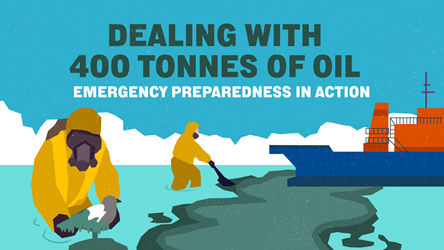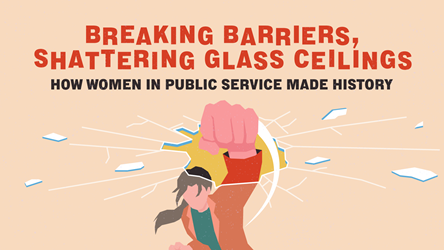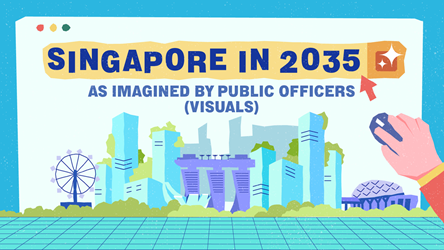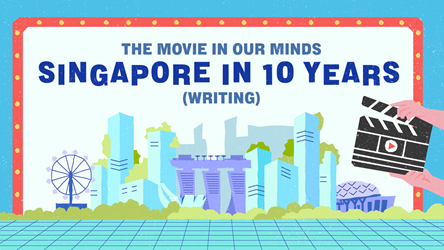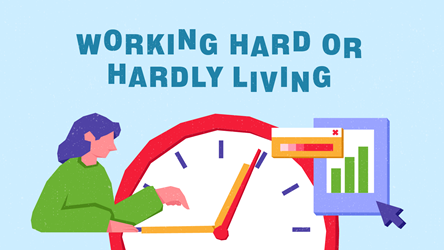Graphic Recording: Drawing Insights From Big Ideas
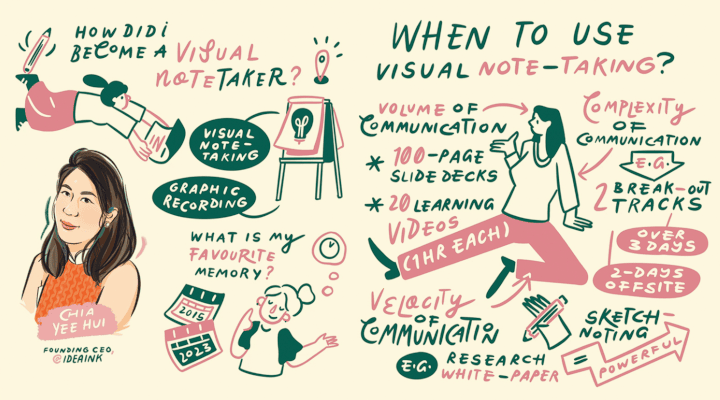
There are many ways to take good notes. Writing by hand instead of typing can help us recall material better. Mind maps help us to understand the relationship between different concepts.
For professional visual note-taker Chia Yee Hui and her illustration studio Idea Ink, graphic recording is their method of choice.
They use drawings and words to capture key takeaways from dense, sometimes complex content (in real-time) from large-scale events such as conferences and speeches. The end product is a visual summary that is both eye-catching and insightful.
Yee Hui explains how the combination of text and visuals in graphic recording makes for better understanding.
A visual note-taker is a professional graphic recorder. We turn high-stakes live discussions into synthesised visuals in real-time, often as a public broadcast.
Graphic recording is sometimes confused with sketch-noting. Sketch-noting is more focused on intimate, personal thoughts. Some examples included travel sketching, bullet journaling, and ideas scribbled in Moleskine journals. Graphic recording, on the other hand, summarises key points from content such as classes, presentations and speeches. Neither is better than the other. In fact, the best sketch-noters often make promising visual note-takers!
Elevating a sketch-note into a graphic recording requires three dimensions: succinct content, great composition and a logical flow between words, ideas and visuals. For most people, this requires prior training.
Find Out How Yee Hui First Became a Visual Note-Taker.
Video by: Idea Ink
Good graphic recording is also good functional drawing. Drawing can be used to express ourselves, but it’s also a functional skill – so some talent is needed to be an effective visual note-taker.
Graphic recording requires a simultaneous exercise of three skills: thinking, writing and drawing — all at the same time. Most people excel in one or two, but very rarely all three, which is where targeted training becomes very effective.
Creating effective visual summaries is a systematic process in information design. It starts with synthesising and simplifying content, and ends with visualising and organising abstract ideas.
Watch To Learn About Some Benefits of Graphic Recording.
Video by: Idea Ink
In a graphic recording, visuals are more important than text. Synthesis and flow between ideas creates clear thinking, which creates a clear visual summary.
Live graphic recording cannot capture detailed nuance. However, 30% retention is better than 0% – people are more likely to remember visuals over text.
The books I recommend starting with are The Sketchnote Handbook by Mike Rhode and How to Draw Anything by Scriberia. You will learn practical techniques on graphic recording, as well as some basics in visual communication, composition and character design.
Visual Note-Takers at Public Service Events
Here are some other illustration studios that have been engaged to do live graphic recording at Public Service events – you may have seen them around!
- Artese Studios
- Welenia Studios
- Sketch Post

To get more stories like this, subscribe to the Challenge Telegram channel.
- POSTED ON
Aug 15, 2023
- TEXT BY
Hidayah Md Sham




